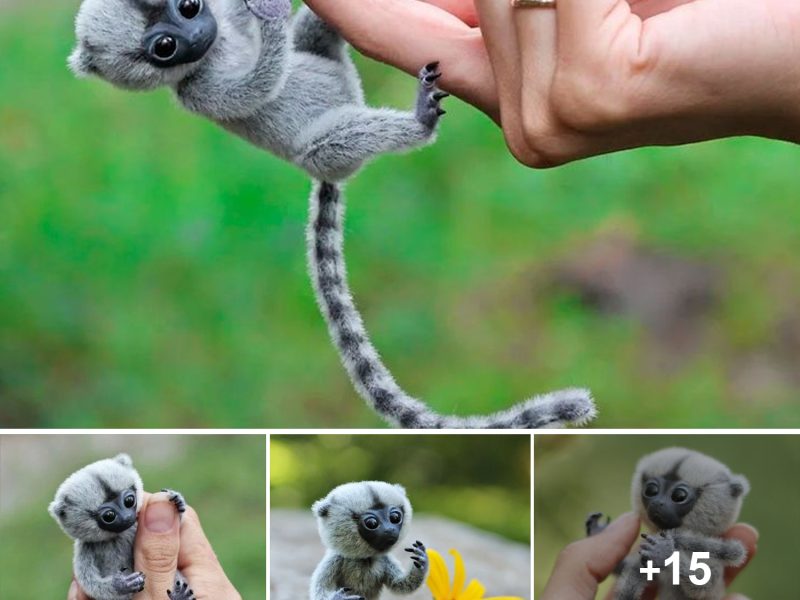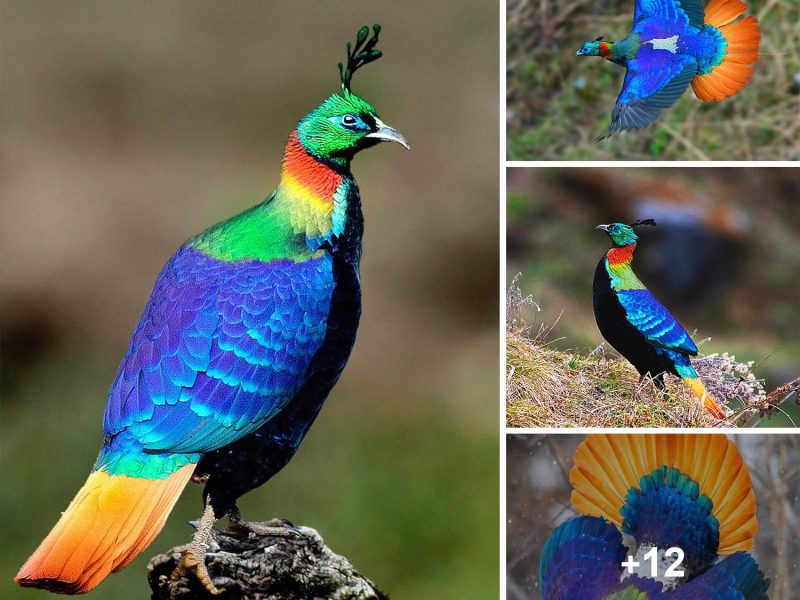Helping an injured or abandoned bird is the mark of a caring person. Before you rush in to help, though, you should make sure you know the best way to do it.
Use our helpful guide to turn good intentions into a successful rescue.
What To Do If You Find An Injured Or Abandoned Bird
1. Determine If The Bird Is Actually Injured Or In Distress
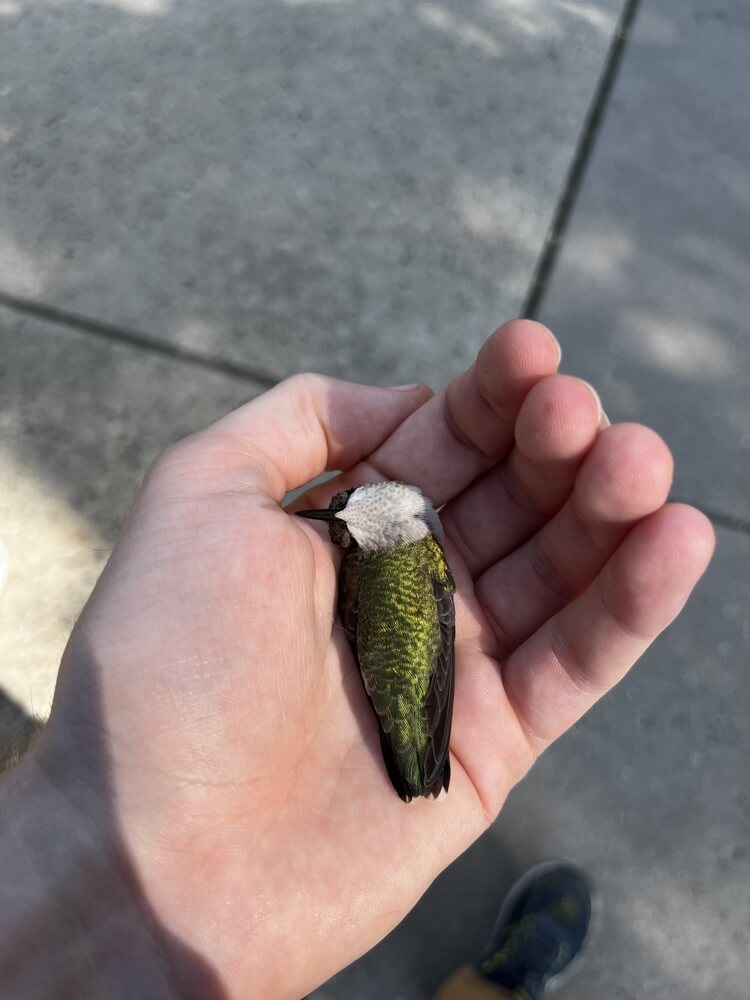
Not every bird you see on the ground is in trouble. Before you approach, take a good look around.
The bird is likely injured or abandoned if:
There’s visible blood.
The bird was brought to you by a dog or cat.
The bird has an obvious broken limb.
It’s a baby bird that is either naked or only has down (no full feathers).
You can see a dead parent bird nearby.
The bird is shivering and/or appears wet.
The bird is limping or is unable to fly.
2. Remove The Bird From Immediate Danger

If you find a bird that’s in immediate danger, try to remove it or the hazards before anything else. Immediate danger means a busy road or sidewalk or a nearby predator like a dog or cat.
If the bird is small and without a sharp beak or talons, you can pick it up with cupped hands. For larger birds, find a blanket or large piece of fabric, such as a jacket or shirt.
Move behind the bird and carefully cover it with the fabric. Gently but firmly hold its wings to its side as you pick it up. It may flutter its wings when you do, but this is a natural reaction.
Gently move the bird out of harm’s way, or put any cats, dogs, or even small children inside.
Now you can use the methods below to help the bird depending on its age and size.
How To Take Care Of Injured Or Abandoned Baby Birds
1. Determine Its Age
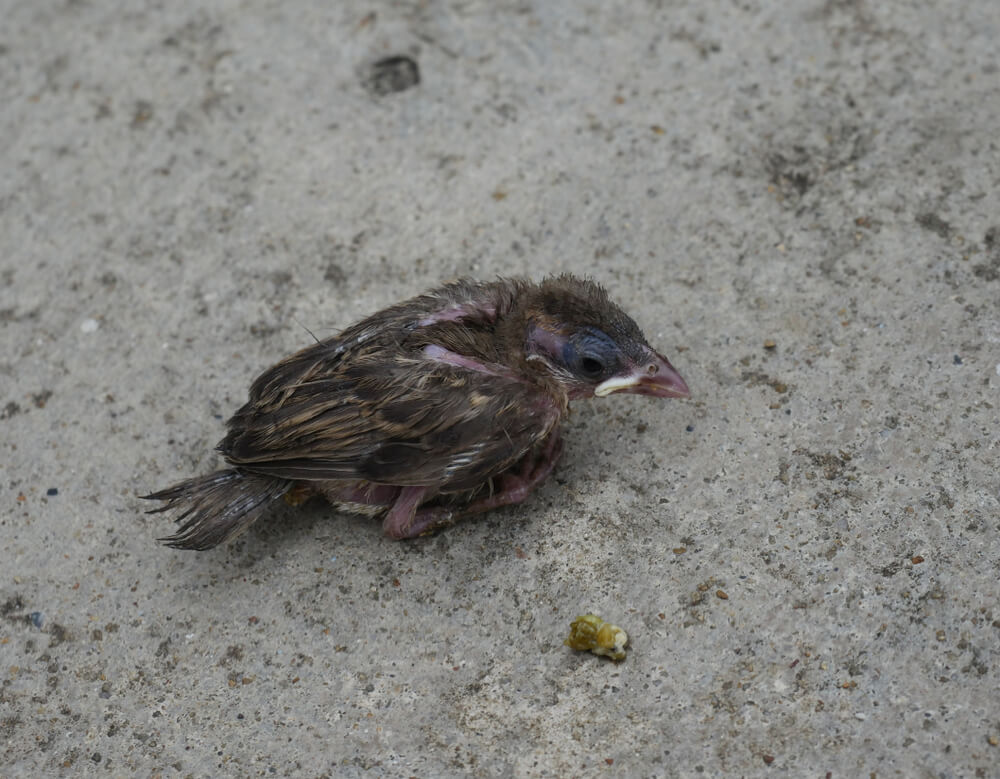
Before you do anything else, check if the baby bird is a fledgling, a hatchling, or a nestling.
Small birds with feathers are fledglings and are likely learning to fly. Other signs of a healthy fledgling are clear, open eyes and the ability to move around.
Fledglings don’t need assistance unless they’re visibly injured, their nest is damaged, or you saw an animal attack them.
If the bird has no feathers or just down, it’s a hatchling. Those with only a few feathers are nestlings. Neither hatchlings nor nestlings should be out of their nests and likely need help.
2. Look For A Nearby Nest

If you can spot the nest and it’s undamaged, you can place the baby bird back inside.
If there’s no nest or if it’s been destroyed, create one. You can use a small flowerpot or even a craft store nest and line it with dry grass and/or leaves.
Make sure the walls of the container you choose are not too high; the parents need to be able to see over the sides. Then, place the temporary nest near where you found the baby and out of harm’s way.
3. Gently Pick Up The Baby Bird
Carefully pick up the bird with closed fingers. Don’t squeeze; just cup your hands around it.
If it’s cold, let it warm up in your hands for a few minutes.
4. Place The Baby Bird In Its Nest
Return the baby bird back to its nest or place it in the temporary one you made. Don’t worry about the parents abandoning the baby because of your scent.
Contrary to popular belief, parent birds will not reject their babies after a human handles them.
5. Wait For The Parents To Return
Move away from the nest and keep watch for the parents for about an hour.
If they haven’t returned within an hour, though, contact your local wildlife rehab facility.
How To Help Injured Small Birds
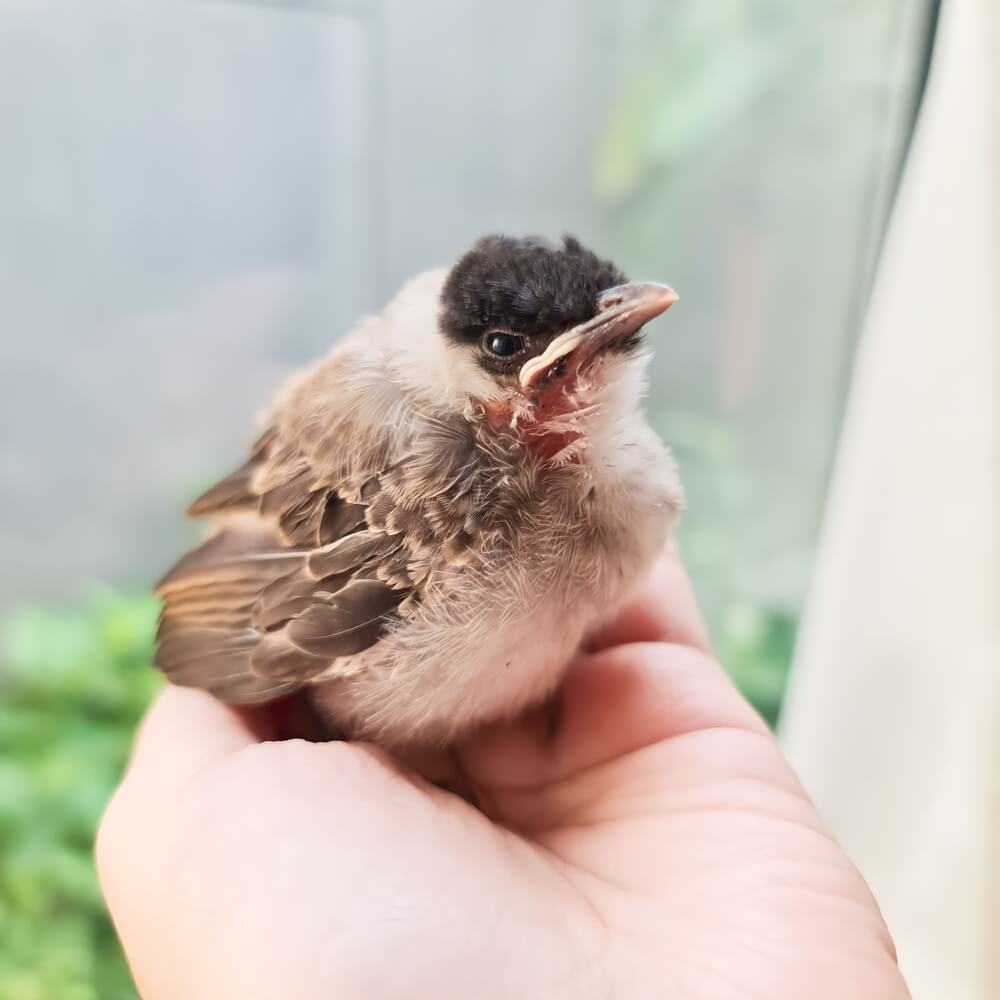
A small bird is anything the size of or smaller than a crow or pigeon.
1. Call Your Local Wildlife Rescue Center
Always call the local wildlife experts before you try to help an injured bird.
2. Find A Container For The Bird
Use a cardboard box with a lid or an unwaxed paper bag to hold the bird. Poke holes in the box.
Line the bag or box with an unscented tissue or paper towel.
3. Use A Blanket Or Towel To Grasp The Birds
Approach the bird from behind to grab it. Firmly but carefully hold its wings by its side with the towel around its body.
Be careful to not squeeze the bird even if its wings flutter. Always be gentle with wild birds.
4. Close The Bird In The Box Or Bag
Put the container with the bird inside in a quiet, warm place.
Try not to talk to or interact with the bird so you don’t cause further stress.
5. Wait For Wildlife Professionals To Arrive
Always follow any additional instructions from your wildlife rescue center and wait for them to arrive at your location.
How To Take Care Of Injured Large Birds And Birds Of Prey
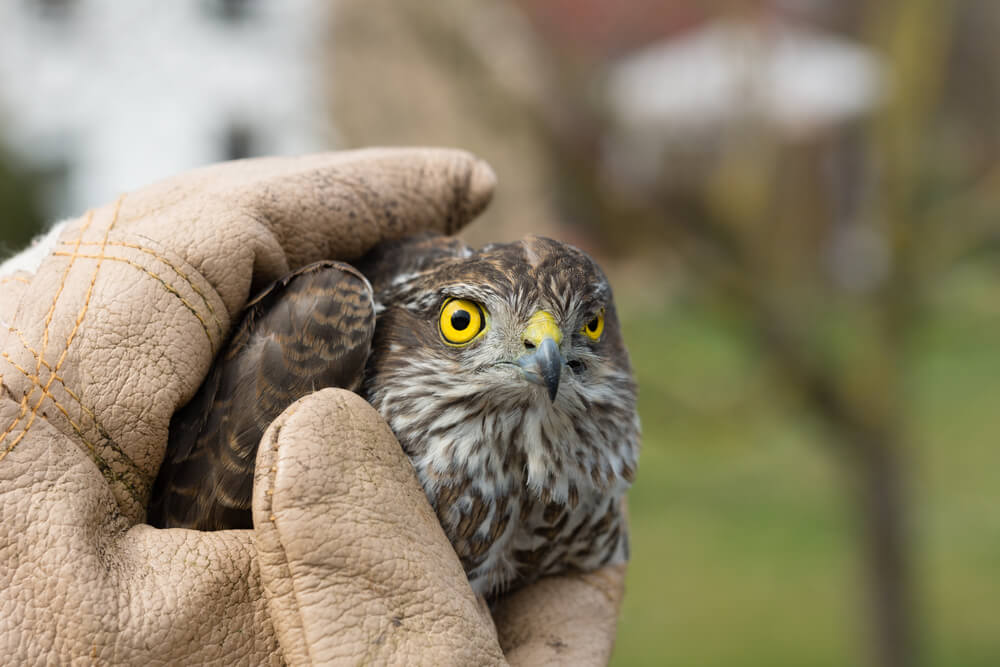
Any bird larger than a crow should be approached with great caution.
You should also use extreme care with birds that have sharp talons and beaks, such as owls or hawks. These birds can strike quickly, even with an injury.
1. Call Your Local Wildlife Rescue Professionals
Before you interact with an injured bird, contact your local wildlife professionals.
Always follow their instructions while you wait for them to arrive.
2. Gather Supplies
Find a container big enough for the bird, such as a hamper or large box. If necessary, poke holes in the container. Then find one blanket or large towel to throw over the injured bird, and one to put flat inside the container.
If you’re concerned about a sharp beak or talons, you can wear thick gloves and protective eyewear before approaching.
3. Put The Bird In A Container
Approach the bird slowly from behind, place the towel or blanket over it, then scoop it into your container.
Or place the container itself over the bird. Then, slide a stiff piece of plastic, cardboard, or wood underneath, similar to how you might catch a spider.
4. Keep The Bird Warm And In A Quiet Area
Place the container somewhere that’s quiet, warm, and dark.
You can always call a rehabilitator for more advice. Follow any further instructions they give and wait for a representative to arrive.
Want more information on how to catch a raptor safely? Watch this video from the Carolina Raptor Center in North Carolina:
Dos And Don’ts For Taking Care Of Injured Or Abandoned Birds
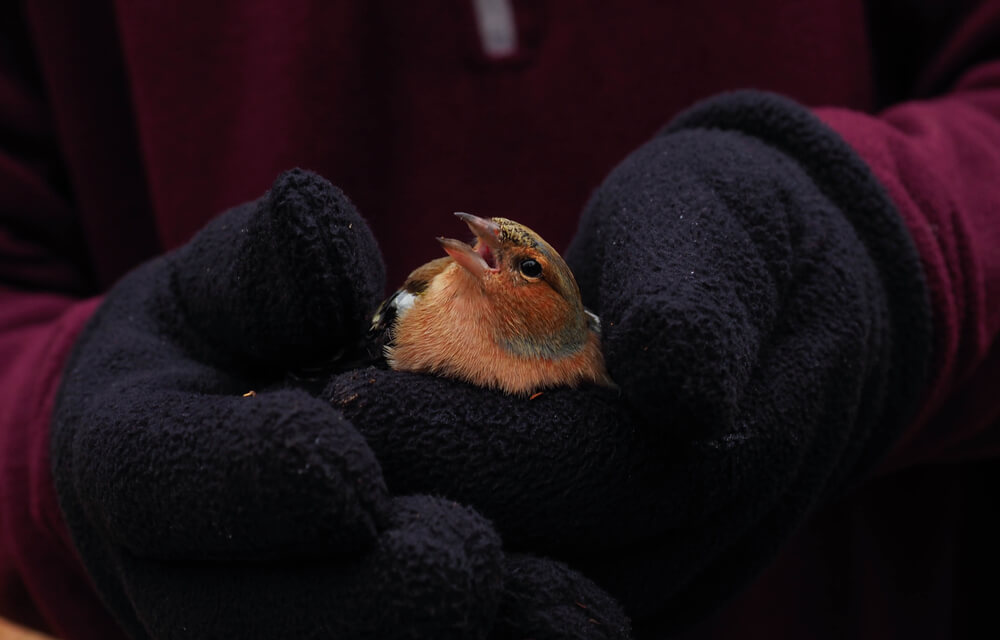
DO wash your hands before and after handling, if possible, or wear gloves. This is more for the bird’s benefit than yours. It’s actually easier for them to get sick from us instead of the other way around.
DO keep a wet bird warm using a light bulb if possible. Place them in a box near a 75-watt bulb, but with enough room to move away if they need to.
DO call a professional wildlife rescue expert if you know a bird was attacked by a dog or cat. Even if there are no visible wounds, birds can easily get infections from even small bites and scratches.
DO call a professional to handle large birds with sharp talons and beaks such as hawks or owls. They can move fast and easily injure you if you’re not careful.
DO leave a baby bird alone if it has all of its feathers, not just down or naked skin. This is a fledgling learning to leave the nest, and its parents are likely close by.
DON’T give an injured bird anything to eat or drink. This is because they may inhale it into their lungs and choke or get sick.
DON’T try to raise a wild bird on your own if the parents are dead or missing. This can cause lasting harm to the bird and is in fact illegal without proper permits.
DON’T talk to or interact with birds once they’re safe in a container. Remember, they are wild animals that aren’t used to human interaction and you will only cause them more stress.
Don’t leave the bird alone if possible. Either watch over it yourself or put someone on guard to keep it safe from predators.
In Summary
Even thoughtful gestures can do more harm than good, especially when it comes to rescuing wild birds. When in doubt, you should always call your local wildlife rescue and rehabilitation center.
But if you’re careful, there are things you can do to help while you wait for professionals. Use this guide to understand how to take care of abandoned or injured birds safely and successfully.
